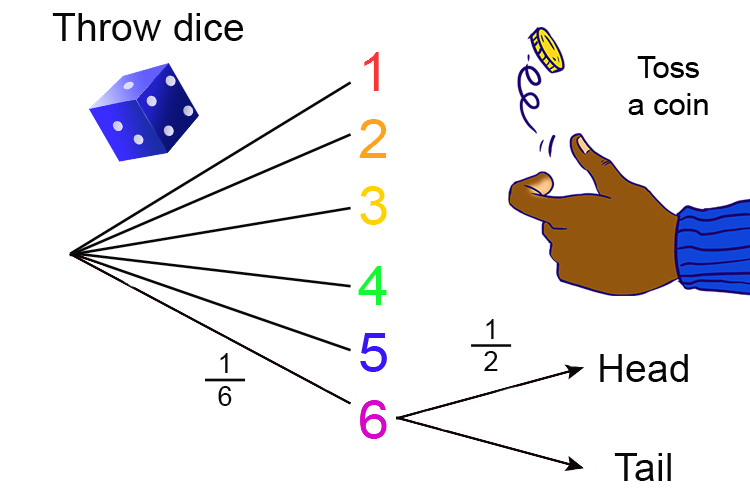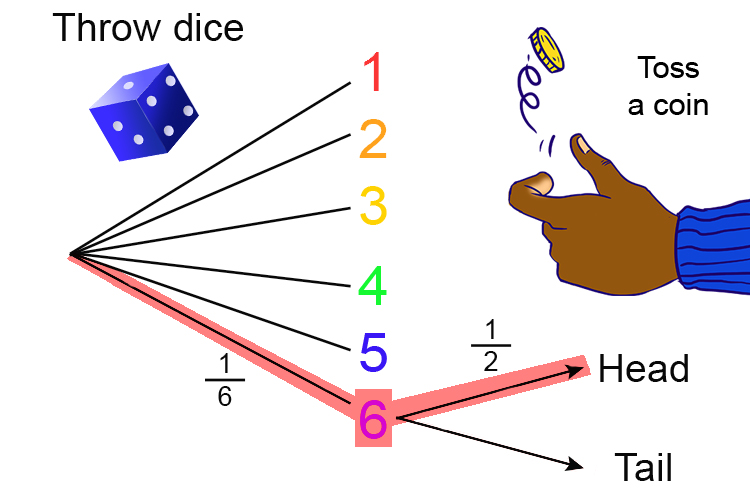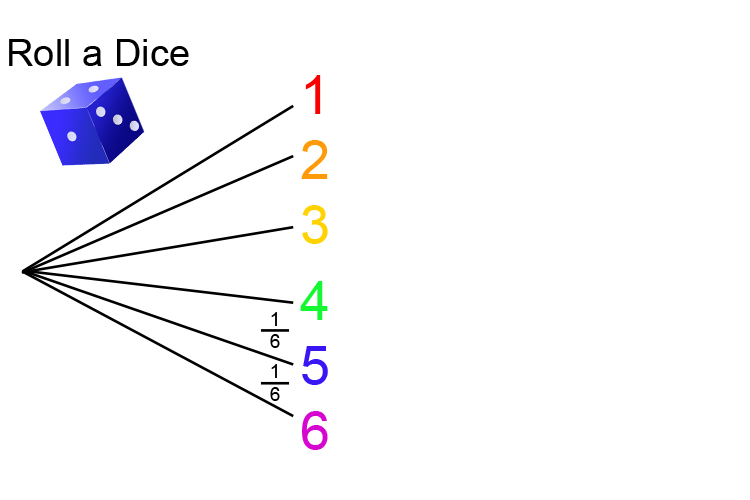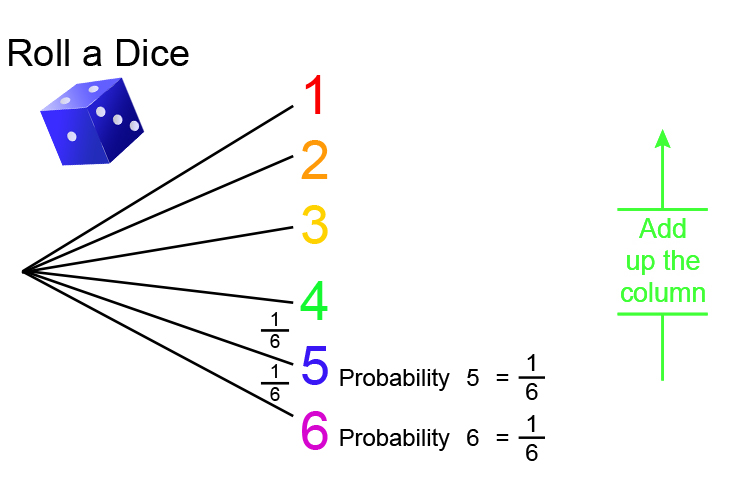And/Or
You don’t need to worry about the word definitions of AND/OR if you draw a probability diagram
Example AND
What is the probability of rolling a 6 on a dice AND getting heads on the toss of a coin?
`Probability\=(Right)/(All) =(The\ \n\umber\ of\ ways\ of \ ac\hiev\i\ng\ suc\c\ess)/(T\he\ \t\otal\ n\umber\ of \ possibl\e\ outcomes`
And
Always draw a probability tree.
`Rolli\ng\ a\ 6\ on\ a\ dice,probability=1/6\ \overset{(Right)}{\underset{(All\ possibl\e)}{text}} ]`
`Probability\ of\ heads\ on\ a\ coi\n=1/2\ \overset{(Right)}{\underset{(All\ possibl\e)}{text}} ]`


6 and heads = `1/6\times\1/2=1/12`
So AND = Multiply
If you draw a probability tree diagram you can see that the word 'and' in the question means that you should multiply the two probabilities.
Example Or
What is the probability of getting a 6 OR a 5 on the roll of a dice?
First remember
`Probability\=(Right)/(All) =(The\ \n\umber\ of\ ways\ of \ ac\hiev\i\ng\ suc\c\ess)/(T\he\ \t\otal\ n\umber\ of \ possibl\e\ outcomes`
And then
Always draw a probability tree.
`Rolli\ng\ a\ 6\ on\ a\ dice,probability=1/6\ \overset{(Right)}{\underset{(All\ possibilites)}{text}} ]`
`Rolli\ng\ a\ 5\ on\ a\ dice,probability=1/6\ \overset{(Right)}{\underset{(All\ possibilites)}{text}} ]`


`1/6+1/6=2/6=1/3`
So Or = Add
If you draw a probability tree diagram you can see that the word 'or' in the question means that you should add up the column.




